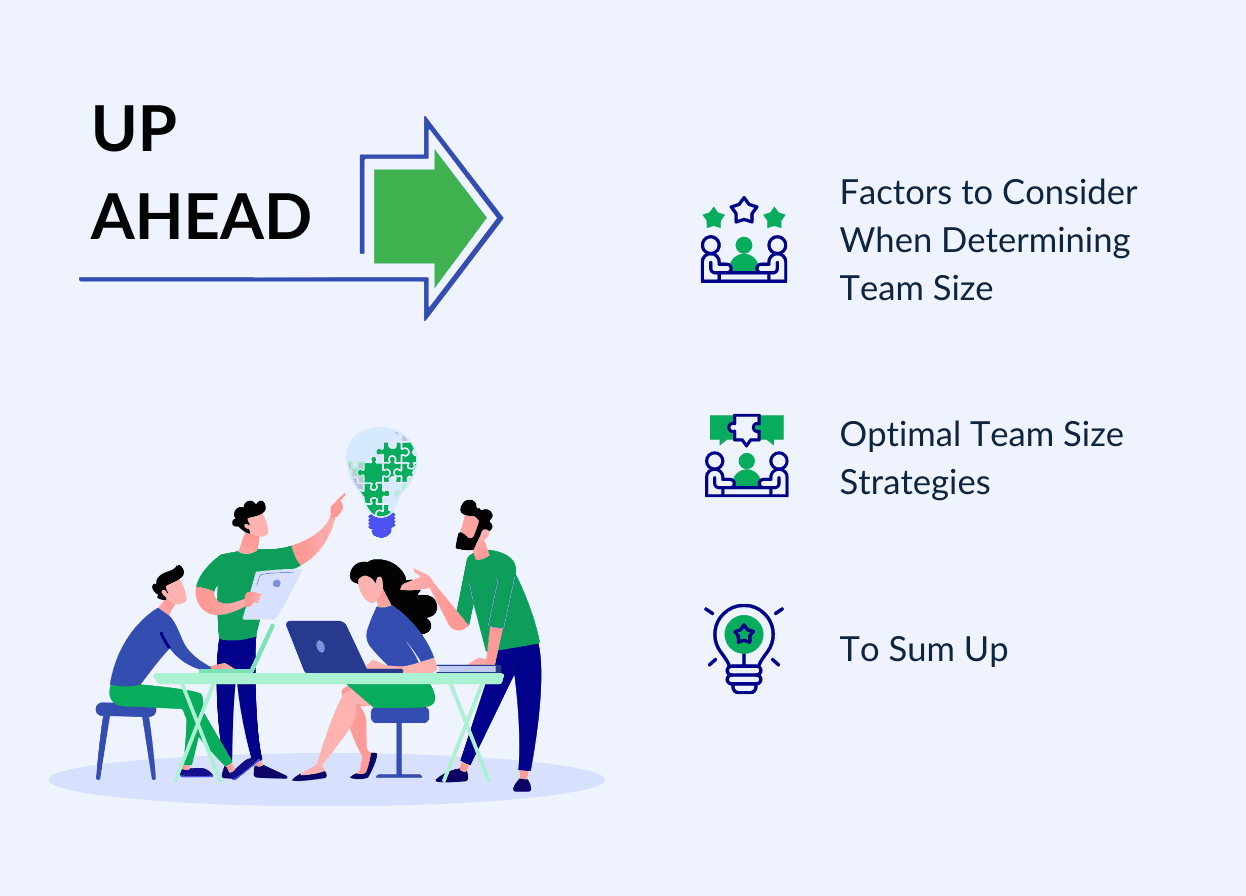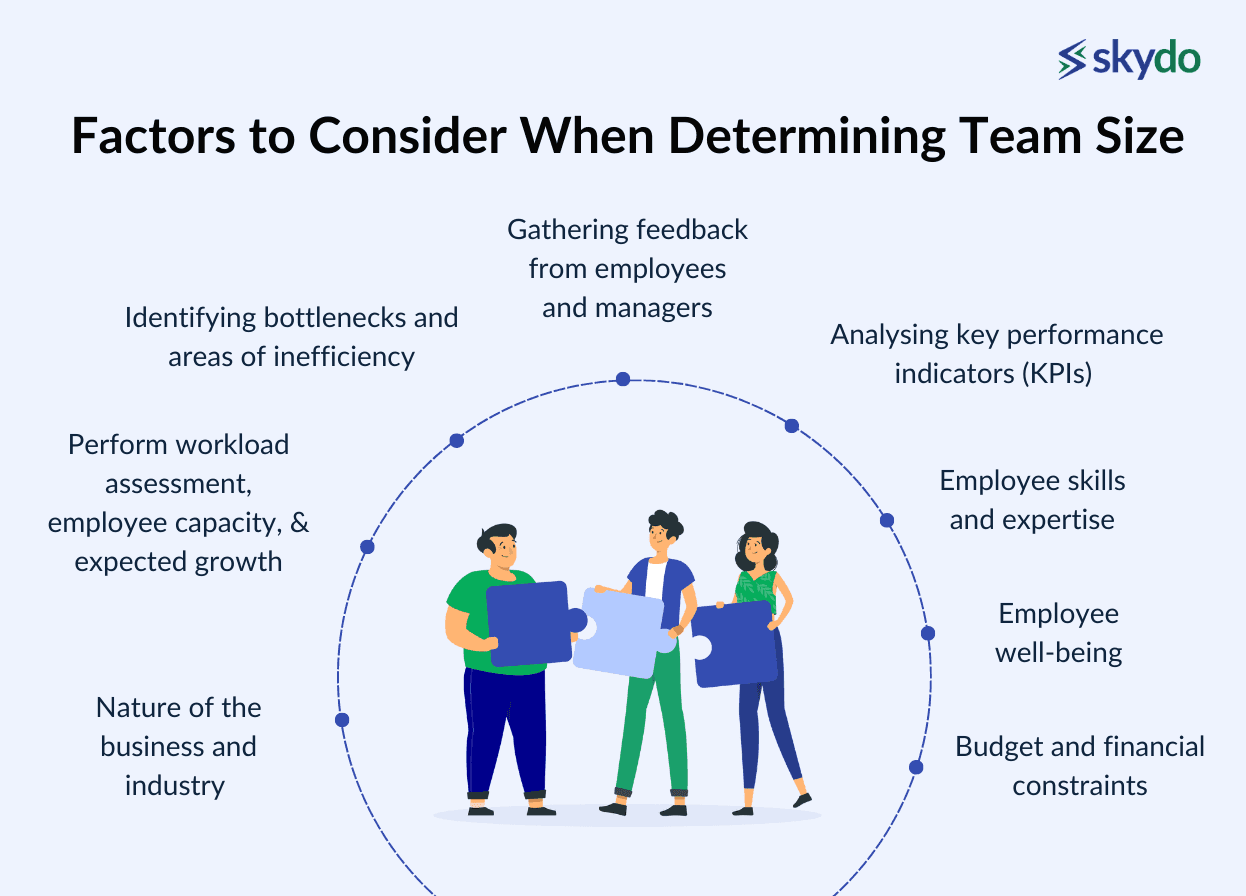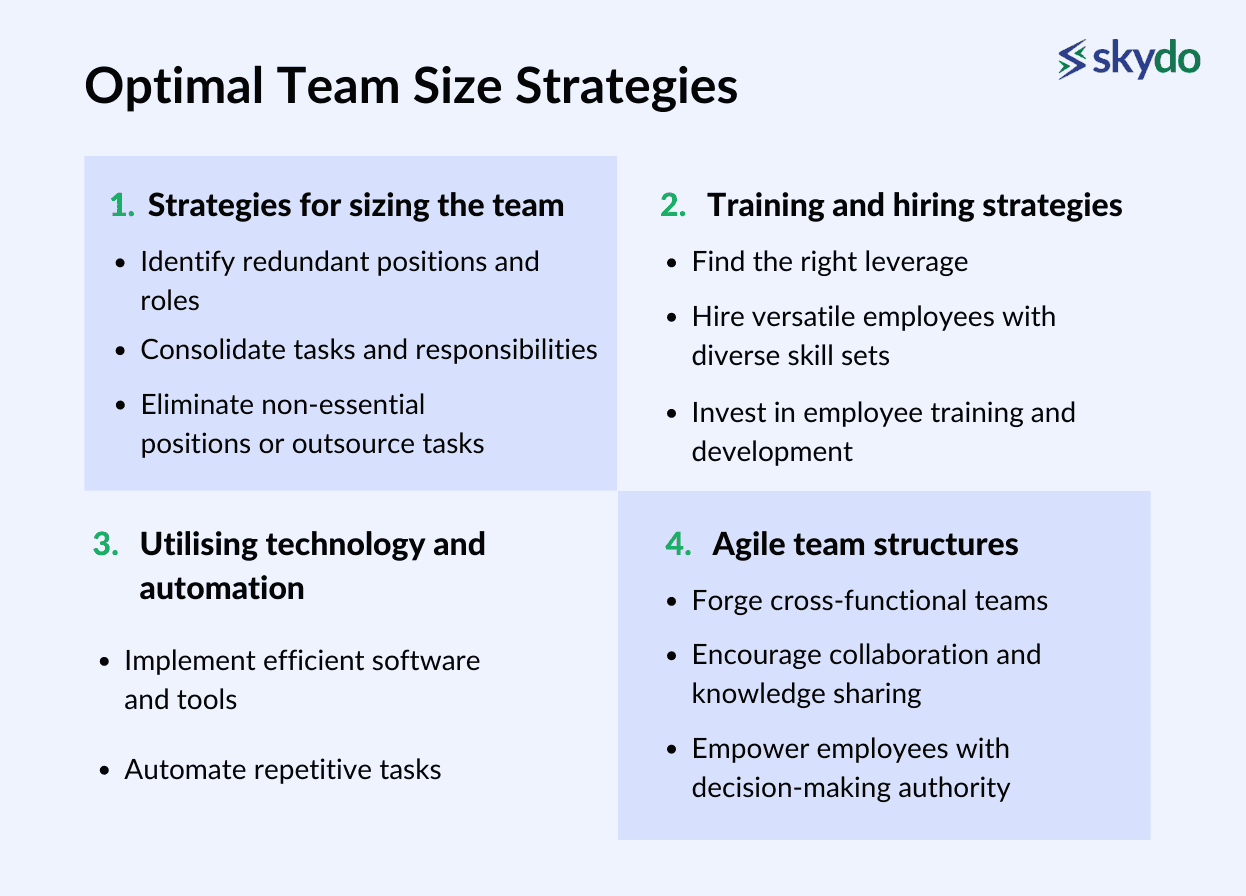Struggling to Meet Deadlines? It Might Be Time to Reassess Your Team Size



“Deadlines just aren’t real to me until I’m staring one in the face.” ― Rick Riordan, The Lightning Thief
Being under the weight of "deadlines” is an all-too-familiar feeling. Time keeps slipping away, and there remains a stack of tasks to complete, pushing relentlessly for it. Sometimes despite your best efforts, you may not reach the deadline and accomplish your work objectives.
As projects evolve, adjusting the team size ensures that resources can be reallocated swiftly, responding to the dynamic demands of the work environment. But what is that perfect number of team members, and how can you make it work for your IT service company?
Factors to Consider When Determining Team Size
Whether you are starting a new project, expanding a department, or reevaluating your current team structure, various factors determine the optimal team size. Here are some key points to consider.

- Nature of the business and industry
The size of your team greatly depends on your business and industry type. For example, a tech startup may only need a small, flexible team to quickly create products, while a big manufacturing company may need more extensive teams to manage production and logistics.
Knowing the specific requirements of your business can help you determine the appropriate team size to meet your operational needs.
- Perform workload assessment, employee capacity, & expected growth
Consider the expected growth of your business and whether the current team can handle the anticipated workload. However, hiring too many employees too soon can result in inefficiency and increased costs, while a team too small may struggle to meet demand.
- Identifying bottlenecks and areas of inefficiency
Evaluate your business’ workflow and identify any bottlenecks or areas of inefficiency within your current team structure. If certain tasks take longer to complete due to a lack of resources, it may indicate that the team size needs adjustment. Addressing inefficiencies can improve productivity and ensure a better allocation of resources.
- Gathering feedback from employees and managers
Employees and managers directly involved in day-to-day operations can provide valuable insights into team size requirements. Seek feedback from team members to understand their workload, challenges, and suggestions for improvement.
Managers can also offer perspectives on how team dynamics affect performance and whether additional resources are needed to meet objectives.
- Analysing key performance indicators (KPIs)
Examine relevant KPIs to evaluate team performance and efficiency. KPIs such as project completion time, customer satisfaction, revenue generated per employee, and error rates can indicate whether the current team size is adequate. Compare historical data and benchmarks to identify trends and potential areas of improvement.
- Employee skills and expertise
Consider the skills and expertise of your employees when determining team size. Having a well-rounded team with diverse skills can enhance problem-solving and innovation. Conversely, a team lacking essential skills may struggle to deliver expected outcomes, necessitating additional team members with the required expertise.
- Budget and financial constraints
Hiring more employees incurs higher costs, including salaries, benefits, training, and workspace requirements. Evaluate your budget and financial projections to balance team size and cost-effectiveness.
- Employee well-being
Maintaining a healthy work environment and employee well-being should be a priority. An overloaded team can lead to job dissatisfaction and higher turnover rates. Striking a reasonable team size helps distribute the workload more evenly and promotes a healthier work-life balance for your employees.
Optimal Team Size Strategies
Determining the ideal team size is akin to crafting a mouth-watering recipe. Too few ingredients and it lacks flavour; too many and it becomes chaotic. Similarly, the perfect team ensures efficient communication, collaboration, and productivity, leading to a well-coordinated, high-performing team.
Here are some strategies for achieving your ideal team size and building a successful team.

#1: Strategies for sizing the team
1. Identify redundant positions and roles
Thoroughly review the team's composition and responsibilities. Identify any redundant positions or roles where multiple team members perform similar tasks.
In a study with people tasked to build a Lego figure, two-person teams took about 36 minutes to finish the project, while four-person teams needed 52 minutes to get there — which means they required 44% more time to complete the project.
In a larger team for a single task, there's always more arguing and debate, which means finding common ground can take longer, eliminating duplication to streamline the workflow and improve efficiency.
2. Consolidate tasks and responsibilities
Analyse the distribution of tasks and responsibilities within the team. Consider merging similar roles or distributing workload more evenly among team members to avoid overburdening individuals and ensure each role has a clear purpose.
3. Eliminate non-essential positions or outsource tasks
Evaluate whether certain positions are essential for in-house operations or if some tasks can be outsourced to external partners or freelancers. This can help optimise costs and ensure the team focuses on core competencies
#2: Training and hiring strategies
1. Find the right leverage
To avoid bottlenecks, you should focus on two aspects of leverage.
- Introduce intermediate leaders within the team to break the reporting span and prevent an overload on the founder or a single senior leader.
- Hire senior professionals who bring thought leverage, enabling strategic decision-making and mentoring.
Building this leverage empowers the team, mitigates dependence on a single individual, and fosters sustainable growth.
2. Hire versatile employees with diverse skill sets
Seek individuals with a broad range of skills and adaptability. Versatile employees can handle various tasks and collaborate effectively across different projects, making the team more agile and flexible.
3. Invest in employee training and development
Enhance the skills and expertise of existing team members through training and development programs. Well-trained employees are more productive and can take on new challenges, reducing the need for additional hires.
#3: Utilising technology and automation
1. Implement efficient software and tools
A study conducted by PWC found that 77% of high-performing teams use good project management tools. Identify and invest in technology that streamlines team workflows. Project management tools, communication platforms, and collaboration software can improve efficiency and enhance communication within the team.
2. Automate repetitive tasks
Automate routine and repetitive tasks to help your team focus on higher-value activities that require creativity and critical thinking.
#4: Agile team structures
1. Forge cross-functional teams
Cross-functional teams with members possessing complementary skills facilitate a holistic approach to problem-solving and allow for faster decision-making.
For instance, an IT services company can form cross-functional teams composed of developers, designers, and marketing specialists for a new software project. This collaborative approach enables seamless integration of technical expertise, user-centred design, and effective marketing strategies, resulting in well-rounded services that meet client needs and exceed expectations.
2. Encourage collaboration and knowledge sharing
Foster a culture of collaboration where team members share ideas, knowledge, and best practices. This cross-pollination of ideas can lead to innovation and better outcomes.
3. Empower employees with decision-making authority
Giving employees autonomy and ownership over their work enhances motivation and accountability.
To Sum Up
Choosing the right team size is vital for business success. Sometimes, hiring high-cost talent is better than hiring multiple juniors for small organisations. Additionally, it is important to assign a reasonable amount of work to your staff without overloading them with too much responsibility or making them feel undervalued in their role.
Using an effective resource tool that provides complete resource visibility is a sure way to increase the accuracy and efficiency of your estimations for the perfect team size.









